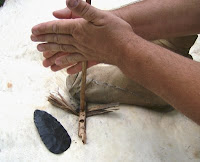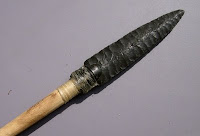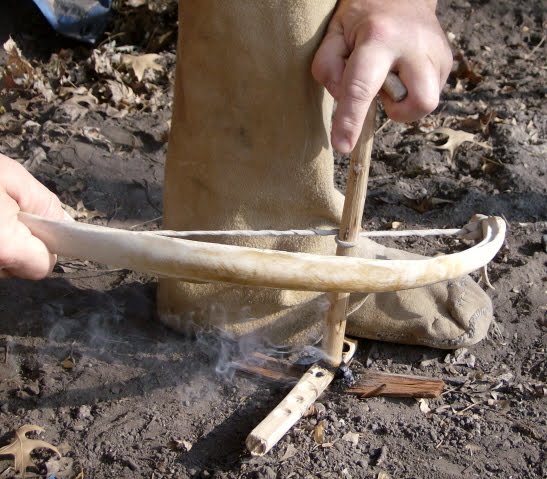 This is a follow-up to a post, dated Monday July 7, which pictured these quasi-Cody blades unhafted. At events I will throw out a trade blanket selling these small stone knives for pieces of paper with Presidents on them...which I trade for gas and food >grin<. Usually, I use deer antler handles, except the top middle blade is hafted in a deer leg phalanges bone. Flintknapper, George Stewart, who passed away last year introduced this idea. A hole is drill thru the knuckle portion to run a cord thru for carrying around the neck. It was curious that Lynx Vilden, in her 1700's Kootenai River living history project, had participants carrying stone cutting blades on cords around their necks for access to a quick cutting implement...no pockets in their buckskins...lol.
This is a follow-up to a post, dated Monday July 7, which pictured these quasi-Cody blades unhafted. At events I will throw out a trade blanket selling these small stone knives for pieces of paper with Presidents on them...which I trade for gas and food >grin<. Usually, I use deer antler handles, except the top middle blade is hafted in a deer leg phalanges bone. Flintknapper, George Stewart, who passed away last year introduced this idea. A hole is drill thru the knuckle portion to run a cord thru for carrying around the neck. It was curious that Lynx Vilden, in her 1700's Kootenai River living history project, had participants carrying stone cutting blades on cords around their necks for access to a quick cutting implement...no pockets in their buckskins...lol.Had some time today to get this done, was doing gate security at the Little Sioux Scout Ranch, near Little Sioux, IA. This was the site the June 11 tornado that tore thru the camp killing four young Scouts and injuring forty others. My son was present. This was an experience that affected all present. My heart goes out to the families which lost sons, and those still recovering from injuries. The Scouts responded admirably digging out trapped members and applying first aid till help arrived. I am proud of them.

















